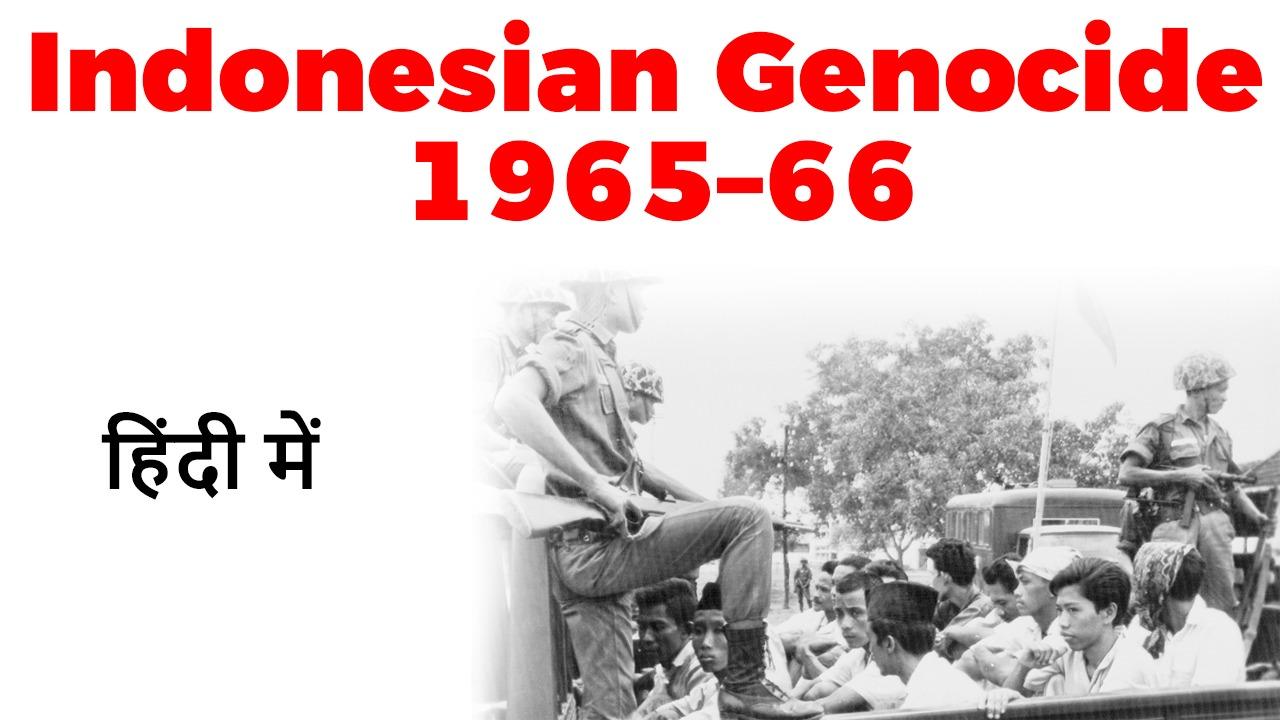Table of Contents
BACKGROUND
- Support for Sukarno’s presidency under his “Guided Democracy” depended on his forced and unstable “Nasakom”coalition between the military, religious groups, and communists.
- The rise in influence and increasing militancy of the Communist Party of Indonesia(PKI), and Sukarno’s support for it, was a serious concern for Muslims and the military, and tension grew steadily in the early and mid-1960s.
- The third-largest communist party in the world, the PKI had approximately 300,000 cadres and a full membership of around two million.

THE BEGINNING
- The party’s assertive efforts to speed up land reform frightened those who controlled the land, and threatened the social position of Muslim clerics.
- Sukarno required government employees to study his Nasakom principles as well as Marxist theory.
- As early as 1958, Western powers—in particular the US and the UK—pushed for policies that would encourage the Indonesian Army to act forcefully against the PKI and the Left.
SEPTEMBER MOVEMENT
- On the evening of 30 September 1965, a group of militants, known as the 30 September Movement captured and executed six of Indonesia’s top military generals.
- The movement proclaimed itself as Sukarno’s protectors, issuing a pre-emptive strike to prevent a possible coup. • After the execution of the generals, the movement’s forces occupied Merdeka Square in Jakarta and the presidential palace.
SEPTEMBER MOVEMENT
- A military propaganda campaign to link the coup attempt with the PKI, masterminded by the military, began to sweep the country on 5 October.
- Graphic images and descriptions of the murdered, tortured, and even castrated generals began to circulate the country.
- Despite falsified information, the campaign was successful, convincing both Indonesian and international audiences.Even though the 30 September Movement killed 12 people, Suharto ultimately presented it as a nationwide conspiracy to commit mass murder.
MASSACRE
- The army removed top civilian and military leaders it thought sympathetic to the PKI. The parliament and cabinet were purged of Sukarno loyalists.
- Army leaders organised demonstrations in Jakarta during which on 8 October, the PKI Jakarta headquarters was burned down.
- In Jakarta and West Java, over 10,000 PKI activists and leaders were arrested.
- Communists, red sympathizers and their families are being massacred by the thousands.
MASSACRE
- The killings started in October 1965 in Jakarta, spread to Central and East Java and later to Bali, and smaller outbreaks occurred in parts of other islands, including Sumatra.
- The communal tensions and hatreds that had built up were played upon by the Army leadership who characterised Communists as villains, and many Indonesian civilians took part in the killings.The worst massacres were in Aceh, Bali, Central and East Java where PKI support was at its strongest. • With very few exceptions, the killings were not spontaneous but carried out with a high degree of organization.
MASSACRE
- The methods of non-mechanised violence and killing included shooting, dismembering alive, stabbing, disembowelment, castration, impaling, strangling and beheading with Japanese-style samurai swords.
- Most of the killings being carried out with knives, sickles, machetes, swords, ice picks, bamboo spears, iron rods and other makeshift weapons.
- Islamic extremists often paraded severed heads on spikes. Corpses were often thrown into rivers, and at one point officials complained to the Army of congested rivers that run into the city of Surabaya due to the bodies.
DEATH
- Before the killings had finished, the Indonesian army estimated 78,500 had been killed, while the PKI put the figure at 2 million.
- In 1966, Benedict Anderson had set the death toll at 200,000. By 1985 he concluded that a total of 500,000 to 1 million people had been killed.
- Most scholars now agree that at least half a million were killed, thus more than in any other event in Indonesian history.
AFTERMATH
- Sukarno’s balancing act of “Nasakom” (nationalism, religion, communism) had been unravelled. His most significant pillar of support, the PKI, had been effectively eliminated by the other two pillars—the army and political Islam.
- On 1 February 1966, Sukarno promoted Suharto to the rank of lieutenant general. On 12 March 1967, Sukarno was stripped of his remaining power by Indonesia’s provisional Parliament, and Suharto named Acting President.On 21 March 1968, the Provisional People’s Consultative Assembly formally elected Suharto as president.
World History | Free PDF






















 WhatsApp
WhatsApp